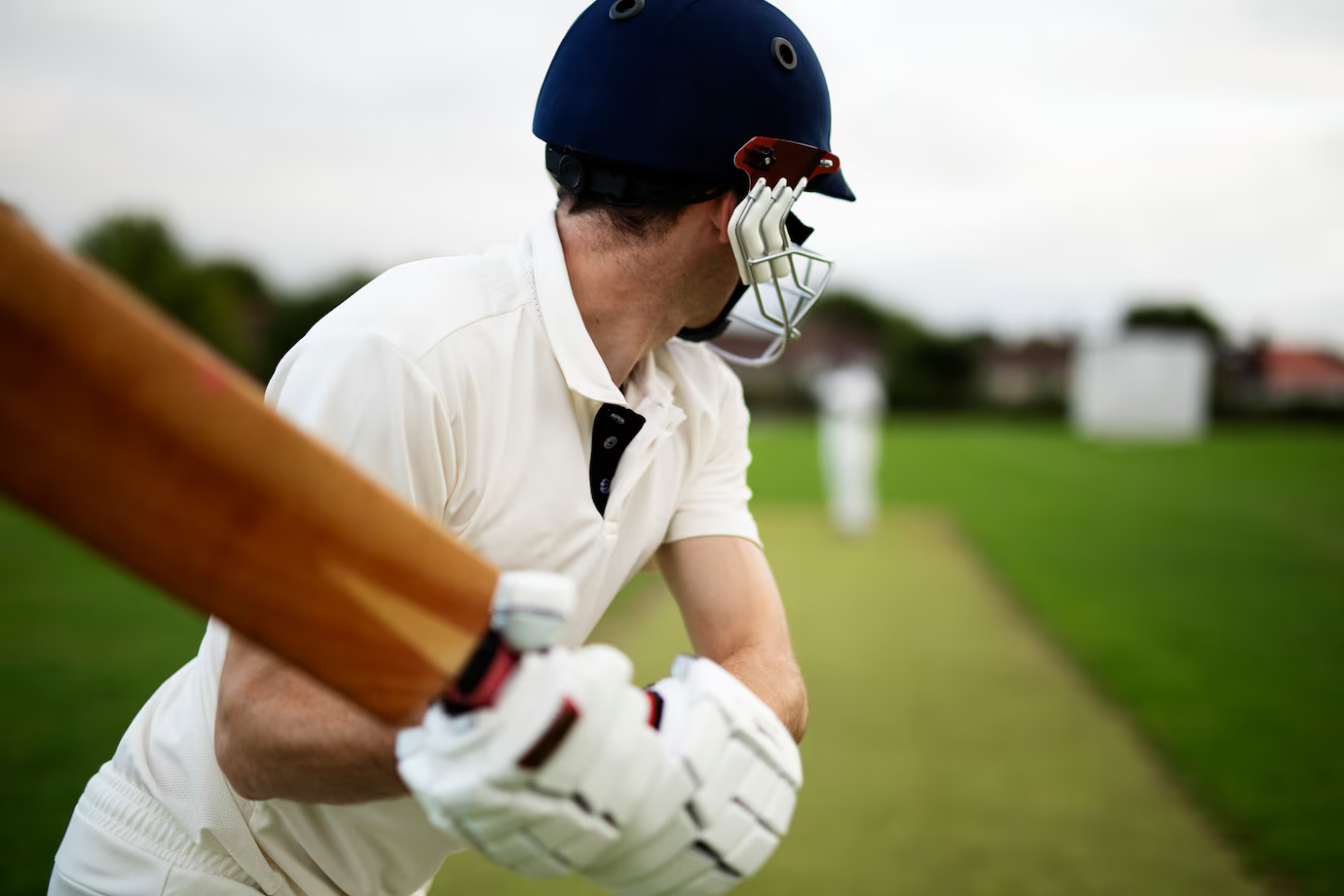Cricket is a sport rich in history and tradition, with a unique set of terminologies that can seem overwhelming to newcomers.
This glossary provides a comprehensive guide to the most common and intriguing cricket terms, making it easier for enthusiasts and beginners to understand and appreciate the game.
From fielding positions to batting strokes and bowling styles, this document covers a wide spectrum of cricketing jargon.
A to Z of Cricket Terminologies
A
- All-Rounder: A player skilled in both batting and bowling.
- Appeal: A loud call by the fielding team, usually directed at the umpire, to declare a batsman out.
- Arm Ball: A delivery by a spinner that does not turn but goes straight on with the arm.
- Ashes: The historic Test cricket series played between England and Australia.
B
- Bail: A small wooden piece that rests atop the stumps. If dislodged, it indicates the batsman is out.
- Beamer: An illegal delivery that reaches the batsman above waist height without bouncing.
- Belter: A term for a flat pitch that favors batsmen.
- Bouncer: A short-pitched delivery that rises towards the batsman’s head or chest.
- Boundary: The edge of the playing field. Scoring four or six runs happens when the ball crosses it.
- Bowled: A mode of dismissal where the ball hits the stumps, dislodging the bails.
C
- Cap: A player’s first match in a specific format (Test, ODI, or T20) is often referred to as earning a “cap.”
- Caught: A mode of dismissal where a fielder catches the ball on the full after the batsman hits it.
- Chinaman: A left-arm wrist spinner’s delivery that spins from the off side to the leg side for a right-handed batsman.
- Cover Drive: A stylish batting shot played through the cover region.
- Crease: The lines marked on the pitch to indicate where the batsman and bowler operate.
D
- Dead Ball: A ball that is no longer in play.
- Declaration: When the batting team’s captain ends their innings voluntarily.
- Deep Fielding Positions: Fielders stationed close to the boundary.
- Doosra: A delivery by an off-spinner that turns the opposite way to a conventional off-spin.
- Duck: A batsman getting out without scoring any runs.
E
- Economy Rate: The average number of runs a bowler concedes per over.
- Edge: When the ball makes contact with the bat’s edge instead of the middle.
- Extra: Runs not scored by the batsman but given to the team, such as wides or no-balls.
F
- Fall of Wicket: The point at which a batsman is dismissed.
- Follow-On: When the team batting second is forced to bat again because they trail by a certain number of runs.
- Free Hit: A delivery after a no-ball where the batsman cannot be dismissed in most ways.
- Full Toss: A delivery that reaches the batsman without bouncing.
G
- Gardening: When a batsman uses their bat to pat down the pitch to fix rough areas.
- Glance: A gentle shot played off the pads towards the fine leg region.
- Googly: A delivery bowled by a leg-spinner that turns the opposite way to a conventional leg-spin.
H
- Half-Century: A score of fifty runs by a batsman in an innings.
- Hat-Trick: When a bowler takes three wickets in three consecutive deliveries.
- Helicopter Shot: A flamboyant shot involving a wristy flick with a follow-through that resembles a helicopter’s blade.
- Hit Wicket: A dismissal where the batsman hits the stumps with their body or equipment.
I
- Infield: The area inside the 30-yard circle on a cricket field.
- Innings: The period in which a team bats or bowls. Teams may have one or two innings depending on the format.
J
- Jaffa: A brilliant delivery that is almost impossible for the batsman to play.
- Jumper: A sweater worn by players during colder weather.
K
- Keeper: Short for wicketkeeper, the player behind the stumps wearing gloves to catch the ball.
- King Pair: When a batsman gets out for a duck in both innings of a match without facing a ball.
L
- LBW (Leg Before Wicket): A mode of dismissal where the ball hits the batsman’s leg in line with the stumps.
- Leg Break: A delivery by a leg-spinner that turns from leg to off for a right-handed batsman.
- Leg Glance: A shot played off the pads towards the leg side.
- Long-On/Long-Off: Fielding positions near the boundary on either side of the bowler.
M
- Maiden Over: An over in which no runs are scored.
- Man of the Match: Awarded to the player with the most significant impact on the game.
- Mankad: A dismissal where the bowler runs out the non-striker for leaving the crease before the ball is delivered.
N
- Nightwatchman: A lower-order batsman sent in to bat at the end of the day to protect a more skilled batsman.
- No-Ball: An illegal delivery, often due to overstepping the crease.
O
- Off Break: A delivery by an off-spinner that turns from off to leg for a right-handed batsman.
- On Side: The side of the field behind the batsman’s legs, also called the leg side.
- Outfield: The area outside the 30-yard circle.
P
- Pace: The speed at which a bowler delivers the ball.
- Pavilion: The building where players and officials sit.
- Pitch: The 22-yard strip in the center of the field where the action takes place.
- Powerplay: A set of overs with fielding restrictions to encourage aggressive batting.
Q
- Quick Single: A run taken by the batsmen immediately after the ball is played.
R
- Run Out: A mode of dismissal where the batsmen fail to complete a run before the stumps are broken.
- Reverse Swing: A phenomenon where an old ball swings in the opposite direction to conventional swing.
- Reverse Sweep: A shot where the batsman switches their stance to hit the ball in the opposite direction.
S
- Silly Point: A very close fielding position near the batsman on the off side.
- Slip: A fielding position behind the batsman to catch edges.
- Stumping: A dismissal where the wicketkeeper breaks the stumps while the batsman is out of their crease.
- Sweep Shot: A shot played on one knee, sweeping the ball towards the leg side.
T
- Tail-Ender: A lower-order batsman, typically a bowler with limited batting skill.
- Third Man: A fielding position on the boundary behind the wicket on the off side.
- Tie: A match result where both teams have the same score.
- Toss: The coin flip before a match to decide which team bats or bowls first.
U
- Umpire: The official who ensures the rules are followed during a match.
- Underarm Bowling: A rare and outdated bowling style where the ball is rolled along the ground.
V
- V: The region between mid-on and mid-off where batsmen often play straight drives.
W
- Wagon Wheel: A graphic representation of a batsman’s scoring shots.
- Wide: An illegal delivery bowled outside the batsman’s reach.
- Wicket: The stumps and bails, or a batsman’s dismissal.
X
- X-Factor Player: A player with the ability to turn a game around single-handedly.
Y
- Yorker: A delivery that pitches at the batsman’s feet, making it hard to play.
Z
- Zooter: A delivery by a leg-spinner that skids instead of spinning.
Conclusion
This glossary captures the essence of cricket’s unique language, offering an accessible reference for beginners and seasoned fans alike.
By understanding these terms, one can better appreciate the strategic depth and excitement of the game.






